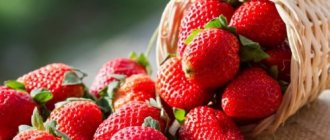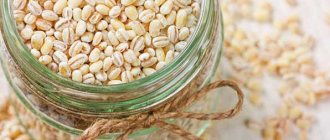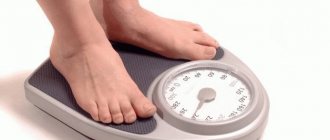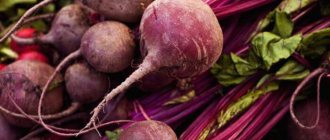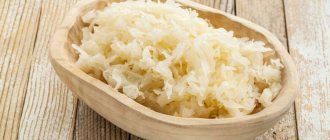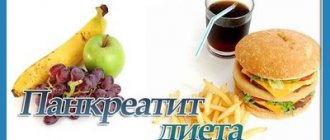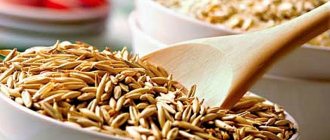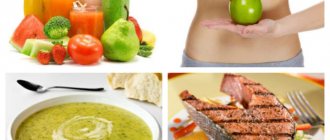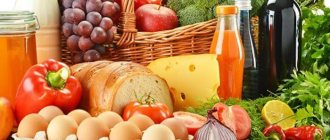Pancreatitis is an inflammatory pathology of the pancreas, which occurs quite often. The acute type of the disease, the deterioration of the condition of an individual with a chronic type of disease, is associated with sharp, severe discomfort in the peritoneal area. The patient requires therapy in a hospital setting. In addition to medications that eliminate discomfort and spasms, the person is prescribed cold lotions and bed rest. Fasting during pancreatitis is a prerequisite for improving the patient’s well-being.
What is inflammation in the pancreas? Why is it dangerous?
The activities of this body play a very important role. It produces special substances - enzymes, with the help of which nutrients are absorbed from food. If the gland functions normally, fluid from its cavity is released into the intestines. With inflammatory pathology of the organ, it produces too much juice. The removal of this substance is difficult. Enzymes destroy gland tissue. Organs close to it also suffer. Signs of the disease are discomfort in the upper part of the peritoneum, nausea, vomiting, loss of appetite, and diarrhea. Deterioration in well-being can be triggered by various factors (emotional overload, consumption of alcohol-containing products and fatty foods, uncontrolled use of medications). In the absence of adequate therapy, the organ is gradually destroyed, and the digestion process becomes difficult. A person cannot normally absorb necessary substances, which leads to death. Fasting for pancreatitis in a hospital setting, following a proper diet after discharge - all these measures help to quickly stabilize the patient’s condition.
Efficiency
Hunger strikes during pancreatitis have been prescribed for many decades. She has earned a huge amount of positive reviews. The effectiveness of the technique is clear - for rapid recovery, damaged tissue must be temporarily left alone. The easiest way to do this is during a hunger strike.
Many patients report complete healing as a result of a short-term “diet” and subsequent transition to proper nutrition. In this case, it is not at all necessary to resort to drug therapy.
Interesting fact. In the initial stages of pancreatitis, most doctors recommend fasting. Treatment with tablets is prescribed for advanced pathology. But even in this case, it is possible to cope with minimal use of drugs.
The importance of this method of therapy for the patient
Temporary refusal of food, according to experts, is an effective way to reduce the process of inflammation in the tissues of the pancreas. During a certain period, the organ is released from the obligation to perform its functions and is at complete rest.
Fasting for pancreatitis should not last more than 3 days. During this period of time, the gland cells and its activity can be completely restored. The inflammatory process (both constant and acute) often becomes the cause of the development of serious complications. They manifest themselves in the form of tissue necrosis, the inability of the organ to perform its functions. Therefore, specialists try to take measures to improve the patient’s condition as early as possible. In the hospital, the patient is given ice compresses to relieve discomfort. A person must constantly remain in bed for several days. This will speed up the recovery process. Therapeutic fasting for pancreatitis is carried out in a hospital, under the supervision of a doctor.
First, the patient needs to completely eliminate food intake. Then he gradually switches to a special diet. At the initial stage of pathology, such measures provide a very good result. Patients do not even have to take large amounts of medication. There are several ways to fast. These are discussed in the following sections.
Locked and dangerous
The pancreas performs several functions in the body.
One of them is the production of digestive enzymes that break down proteins, fats and carbohydrates that come with food. At first they are inactive; they begin to perform their duties only when, having passed along the pancreatic duct, they enter the duodenum. This is normal. If the duct is blocked for some reason, the enzymes remain locked inside the gland. Sooner or later they become active and begin to digest - but not food, but pancreatic cells. Inflammation develops, part of the gland is destroyed, and connective tissue forms in its place. This inflammation is pancreatitis. It can be acute or chronic. In the first case, o and is observed for a relatively short period. In the second, the iron is destroyed slowly, but over a long period of time.
Both scenarios are fraught with serious complications. No other organ is capable of taking over the work of the pancreas, so the death of its tissue (pancreatic necrosis) is an irreparable loss for the body.
The consequences of acute pancreatitis are directly related to the scale of destruction. Basically, it is small - in most people the inflammation is mild. But there are also cases when almost all the iron dies. They are incompatible with life.
The most important function of the pancreas is the production of insulin, which is necessary to control blood sugar levels. The fewer cells involved in its production, the higher the risk of diabetes. It is often observed in the later stages of chronic pancreatitis. Another formidable complication is pancreatic cancer: one of the most aggressive oncological diseases, which modern medicine is practically unable to cure. This is why problems with the pancreas cannot be ignored.
Methods
Therapeutic fasting for pancreatitis is divided into dry and allowing the intake of liquid (still water, decoction of rose hips, chamomile). Experts have differing opinions about these methods. Some doctors believe that the first method is the most effective. However, this regime can last no more than 24 hours. Then the patient needs to drink water without gas, often, but with a gradual increase in its volume.
Over the next two days, a person is allowed to eat a little vegetable broth. On the fourth day, the menu needs to be diversified. During exacerbations, the patient experiences strong vomiting, severe discomfort, and high fever. Fasting with pancreatitis will not be particularly difficult for him due to loss of appetite and pain. However, refusing food and liquid, despite all the benefits of this event, is not suitable for all individuals. It is contraindicated for the following categories of persons:
- Women who have experienced an exacerbation of pathology during pregnancy.
- Patients with low blood pressure.
- People with low blood glucose concentrations.
- Persons suffering from anemia or vitamin deficiency.
Fasting during inflammation of the pancreas can be gentle. During the first three days, the patient drinks a decoction of rose hips, still mineral water and chamomile tea in unlimited quantities. On the fourth day, foods are gradually included in his diet. If a patient with an acute type of disease adheres to this regimen, he can protect himself from the disease becoming chronic.
How long to continue?
The duration of fasting for such a disease should not exceed 2-3 days. During this time, the pancreas will have time to rest and begin to produce a moderate amount of enzymes, which will enter the duodenum without remaining in the tissues and ducts. In 2 days, the body will not have time to deplete its energy reserves, so you don’t have to worry that therapeutic fasting will provoke the development of other diseases caused by metabolic disorders.
After 2-3 days of fasting, you should start eating food gradually. Under no circumstances should you start eating everything right away to satisfy your hunger and catch up on lost time.
Refusal to eat after an attack
The features of this event are determined by the type of pathology. Fasting during exacerbation of pancreatitis should be carried out in a hospital setting. During this period, the patient should be examined and observed by a specialist. For two days, the patient drinks a liquid heated to a temperature of 36 degrees, for example, chamomile decoction.
Cold and too hot drinks are strictly prohibited. During these days the patient needs to stay in bed. Then, if a person does not feel discomfort, he can gradually expand his diet. When a stable remission is achieved, it will be enough for the patient to spend fasting days on water once a week.
Basic principles of nutrition
Symptoms of pancreatitis after fasting, if it is too long, may reappear. In order to avoid this, you should not refuse food already on the fourth day after the onset of the attack. The patient's condition stabilizes if he eats small amounts, but often (up to 6 times a day). First, you should eat foods in the form of purees, consisting of one component. This measure will avoid irritation of the gastrointestinal tract. It is necessary to limit carbohydrates and lipids, but include a sufficient amount of microelements, proteins and vitamins in the diet. Food should have a neutral taste. Excessively sweet, too sour or salty dishes are excluded. Spicy seasonings, dyes and other additives are also prohibited. On the first day after fasting for pancreatitis, the patient can eat dried wheat bread, rice broth, tea with a small amount of granulated sugar. The next day, the diet is introduced with vegetables (boiled or steamed), soups according to vegetarian recipes in the form of puree.
It is better to replace vegetable fat with butter. It is added to dishes in small portions. The energy value of the diet after fasting should not exceed 1800 kilocalories. The diet should be followed for three weeks.
Symptoms of chronic pancreatitis
- Pain in the abdominal area (usually in the left hypochondrium, less often in the right, sometimes radiating to the back, behind the sternum, shoulder blade), usually occurs or intensifies 40-60 minutes after eating (especially after a heavy, spicy, fatty, fried meal), may intensify in a lying position and weaken in a sitting position, with a slight bend forward.
- Decreased appetite.
- Weight loss.
- Belching.
- Nausea.
- Vomit.
- Bloating and rumbling stomach.
- Diarrhea.
- Flatulence.
Refusal to eat in chronic form of the disease
This type of disease is characterized by mild symptoms that are sometimes difficult to detect. The condition of the digestive organs can only be assessed through tests. To prevent the development of complications, the patient should refuse food for the whole day. Fasting for chronic pancreatitis is usually carried out at home. The patient must remain in bed throughout the day.
The next day, the patient needs to eat a plate of pureed first course or vegetable broth. With chronic inflammation of the pancreas, health returns to normal faster than with an acute attack. However, recovery from fasting with pancreatitis, regardless of the characteristics of its course, should be slow. It is necessary to gradually add different dishes to the diet and monitor the state of the digestive system.
Where did he come from?
Pancreatitis can be caused by a birth defect in the pancreas, certain autoimmune diseases, or certain medications. The disease can be triggered by a number of infections, hepatitis B or mumps. But most often, inflammation of the pancreas is caused by alcohol abuse.
Alcohol itself has a bad effect on gland cells, causing their damage. In response to a “drink or two,” the concentration of enzymes in the digestive juice increases. It moves more slowly along the ducts and therefore can begin to act before reaching its destination. Moreover, alcohol causes spasm of the sphincter located between the pancreas and duodenum. Normally, it should allow enzymes into the intestines, but block the exit of digested food from it. After abusing alcohol, it may not open in time, blocking digestive juice in the ducts.
Scientists have calculated that in order to “earn” pancreatitis, a person must consume 150 g of alcohol daily in terms of pure alcohol for 10 years. This is 375 g of vodka, about 1 liter of wine or 3 liters of beer. Quite a lot. However, let's not forget: these are averages. For many, the reaction occurs faster. For some, it is enough to “abuse” just a few times to provoke an attack.
The most dangerous combination of alcohol with fatty, spicy, salty foods. That is why the maximum number of exacerbations occurs after the holidays, when we lean on alcohol and delicacies. Such food in itself is dangerous: doctors attribute the fact that the incidence of pancreatitis has been constantly increasing in recent years to the increase in consumption of fatty foods.
Another cause of an attack may be gallstone disease. If you draw a schematic diagram of the bile duct and pancreatic duct, they will look like rivers on a map. Both “streams” flow into the “sea” - the duodenum. In a small area in front of it, they “merge” together, forming a common channel. If a stone travels along the bile duct and gets into this part, it can block the “gate” to the pancreas, thereby causing stagnation of enzymes.
Article on the topic
The pancreas takes revenge on us for our mistakes
The main rules for further diet
After feeling better, the diet of patients with chronic pathology should be based on the following rules:
- You should eat enough animal proteins.
- It is necessary to limit the amount of table salt to 10 grams.
- Drink up to 2 liters of liquid per day.
- The energy value of the diet should not exceed 2600 kilocalories.
- You need to eat food in small portions, often, prepare mashed, boiled, baked and steamed foods.
- Avoid foods that are too hot or too cold.
Recommended products and dishes
Products from the approved list can be prepared by cooking, steaming and baking. When consuming them, it is important to avoid overeating. After the attack has stopped, nutrition is resumed gradually (the standard portion should be divided in half).
When creating a menu, food intolerance to certain products is additionally taken into account (for example, intolerance to dairy products, allergic reaction to seafood, etc.).
List of allowed products and dishes based on them:
- slimy and vegetarian soups (such dishes should be cooked in water, light vegetable broth);
- lean varieties of meat (ingredients are ground as much as possible; soufflés and puddings are prepared based on such products);
- fish of low-fat varieties (the product is used to prepare dumplings, meatballs, cutlets, maximum grinding of the ingredients is necessary, fish in pieces can only be consumed during the period of remission);
- protein omelet (steam version only, you can only consume the white of one egg per day);
- cottage cheese (can be used in the form of casseroles, puddings, the fat content of the product should be minimal);
- kefir (the product must be one-day use; mature kefir is strictly prohibited for pancreatitis);
- milk (only pasteurized milk with a low fat content, use as part of dishes and drinks - tea, soups, milk noodles, be sure to dilute with water);
- carrots, potatoes, pumpkin, beets, zucchini (these vegetables are allowed to be consumed only after heat treatment; in the form of puddings, purees, stews, they are allowed to be introduced into the diet only in the second part of the diet);
- rice, buckwheat (slimy porridges, puddings, in the second part of the diet it is allowed to make casseroles from cereals);
- sweet fruits (baked apples, fruit puddings, jelly, puree, you can add fruit to other dishes);
- wheat crackers and biscuits (ideal snack foods).
List of prohibited foods
It includes the following:
- Any types of drinks containing ethyl alcohol.
- Sparkling water.
- Meat and fish with a lot of fat, decoctions from them.
- Mushroom dishes.
- Too sour or sweet berries and fruits.
- Legumes.
- Pastries, fresh bread and buns made from wheat flour.
- Cabbage.
- Radish and radish.
- Eggplant.
- Desserts (jam, chocolate, sweets, cakes, ice cream).
- Strongly brewed tea, drinks containing caffeine.
- Salted, pickled, smoked and spicy dishes, spicy cheeses.
- Fried foods.
- Semi-finished products.
- Juices from packages.
- Hot chocolate, cocoa.
- Too sour dairy products.
- Salted nuts, chips.
Diet goal
The main goal of dietary nutrition for acute pancreatitis is to restore the functional state of the pancreas. A properly formulated diet will eliminate certain types of complications, improve the functioning of the digestive tract and ensure long-term remission.
All stages of the diet have their own meaning. Only by observing each of them can you achieve the therapeutic effect of dietary nutrition.
Goals of different stages of the diet:
- fasting provides functional rest to the digestive system (toxins are eliminated, the process of enzyme production is stopped, the regenerative function of the pancreas is launched);
- a gentle diet ensures a gradual increase in the load on the digestive organs (the functional state of the digestive tract is restored);
- The diet, allowed from the tenth day of therapy, allows you to establish the digestion process, begin to replenish the supply of useful components in the body and normalize the functioning of the pancreas.
What is allowed to be consumed?
When you come out of fasting with pancreatitis of the pancreas, you can eat the following foods:
- Skinny varieties of fish.
- Lean meat (chicken or turkey without skin, beef, veal or rabbit).
- Dairy products containing a small amount of fat (for example, homemade cottage cheese).
- Potatoes, pumpkin, zucchini, boiled, baked or pureed.
- Porridge made from buckwheat, oatmeal or rice, cooked in water.
- Dried bread made from wheat flour.
- Steamed egg white omelettes.
- First courses made from pureed vegetables.
- Boiled root vegetables with a sweet taste (beets, carrots).
- Compote of dried fruits and berries, fruit juice, jelly, tea with chamomile.
- Mineral water without gas containing alkali.
What can you do at home?
The patient should understand that abstaining from food is not the end of treatment, but only the beginning. The main thing is the correct entry and exit from hunger.
Entrance
It will be a huge stress for the body if you suddenly start fasting. It is better to gradually reduce the amount of food consumed and at the same time increase the frequency of meals. For maximum unloading of the pancreas, you will need the following:
Is it possible to eat bell peppers for pancreatitis?
- eat food six to eight times a day;
- use exclusively pureed foods;
- the main menu should consist of protein foods;
- give up fatty, sour, fried foods, as well as carbohydrates.
Only after such preparation of the body can you begin fasting. The choice of fasting method is up to the attending physician.
Hunger strike
Fasting at home is based on three main canons:
- Hunger.
- Cold.
- Peace.
Doing a cleansing load for more than three days is dangerous! Prolonged fasting leads to the fact that enzymes and toxins activate a new inflammatory focus in the gland.
You can’t eat anything during a therapeutic fast
Exit
The first thing to do after fasting is to drink a glass of warm boiled water. You should drink it slowly so that the liquid mixes with saliva. After about two hours, you are allowed to consume the pureed vegetable soup. In order to come out of a hunger strike painlessly and without causing complications, it is necessary to follow a dietary diet. You will have to give up many of your treats.
The following foods can cause an attack of pancreatitis:
- soda;
- coffee;
- strong tea;
- chips;
- sweets;
- fast foods;
- sausage;
- fresh white bread;
- garlic, onion;
- horseradish, mustard and more.
Acceptable methods of preparing food are stewing, boiling and baking. Limiting the consumption of carbohydrates and fats of animal origin will help improve the digestion of food and speed up recovery in general. Be sure to include still mineral water - Borjomi - in your menu.
Important! Untimely fasting during pancreatitis and refusal of qualified assistance from specialists can cause blood poisoning.
